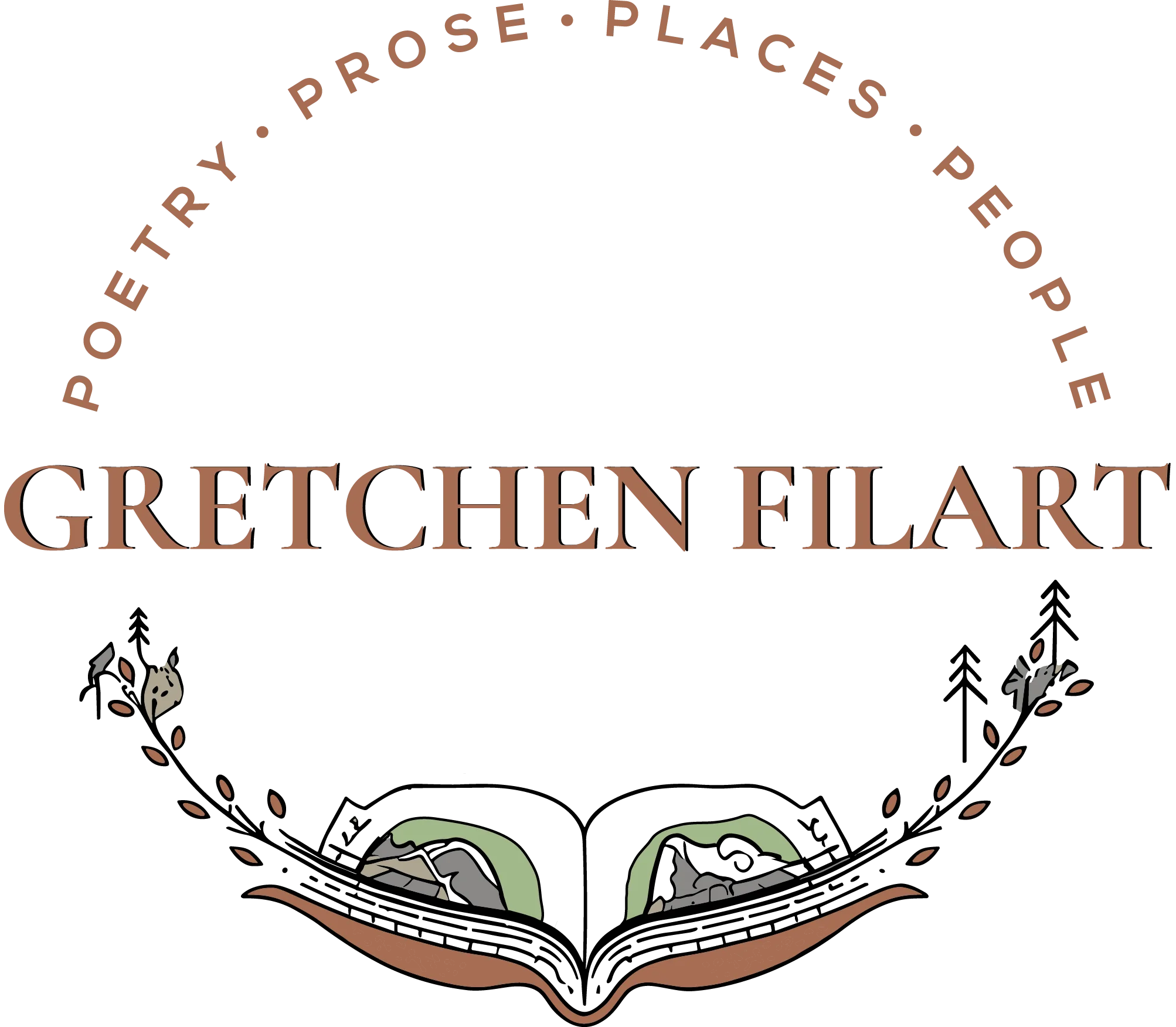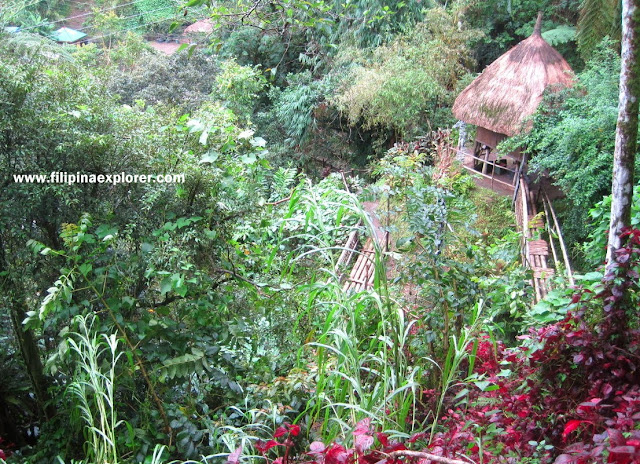At 7:30 in the morning, outside our room at Casa Vallejo, the rain was threatening to take over the day. Jigs sweeped the window curtain with his hand, examining the drizzle and grey shades. “What now?” he asked.
His resolve was 50-50. Mine was…well, I can be ridiculously stubborn when it comes to traveling, even alone with a toddler. I didn’t pay an extra night to snuggle inside a hotel room and surf channels. I came to teach and spend the rest on seeing town.
So we grabbed our umbrellas, hailed a taxi and left the hotel at 8:00 AM for Tam-Awan Village along Benguet Road.

 |
| Two ways to access the exhibit area/ Cafe: A shorter but steep staircase, and a longer but safer route |
Within 30 minutes we were in Baguio’s artsy reconstructed Ifugao Village. Manong Driver waited for us at the small parking space as we explored the village for an hour-and-a-half. En-route he made a good pitch for a half-day Baguio City-La Trinidad Valley tour for P1,000, and I’m glad we agreed, because rarely did a jeepney or taxi passed by the village – and it was raining and a weekday!
The idea behind Ben Cab and Chanum Foundation’s brainchild is to offer visitors a genuine experience of Cordilleran art, fare and architecture without needing to go deep into the Valley.
Nine Cordilleran huts, including the first three Bangaan huts procured in ’98, are scattered across the 2.5-hectare hill, accessible via bamboo bridges and established trails.
*See next section.
Viewing Deck
A steep and moss-covered staircase stood in front of us by the Agape hut. On either side was muddy earth, a bit loose, overlaid with untrimmed grass, twigs, trees and God-knows-what-else. Even with a good pair of trekking sandals, the wet soil and uneven rocks could easily cause an accident. Lia had to stay with Jigs at the cafe while I explore the rest of the trail because, well, between me and him, I’m more enthralled (and less paranoid) about trekking.
 |
| Path leading to View Decks 1 and 2 |
 |
| View Deck 1 |
Situated atop the hill is a second, more expansive and more recent viewing deck – which I would’ve visited had Lia not cried audibly enough all the way from Bugnay Gallery to View Deck 1. Or approximately 0.5 kilometers away and 15 feet down from where I stand. True story.
Tam-Awan Cafe
 |
| Right in-front of Tam-Awan Cafe is a small space for cultural dances by Ifugao tribesmen on weekends. |
 |
| Cafe menu uses indigenous Ifugao fabric for cover. Nice. |
 |
We were mesmerized by this beautiful lady. Truly a gorgeous Pinoy masterpiece. |
I ordered the Cordilleran Clubhouse Sandwich (P220). While the Kiniig was indeed smoky and tender, I am not exactly over themoon about it. It is a decent sandwich, and I managed to finish two our of four slices.
 |
Cordilleran Clubhouse Sandwich |
Jigs had the Tam-Awan Burger (190). We liked the plump, juicy patty and the melted cheese. Sandwiches also come with fresh greens on the side (equally huge!), drizzled with their famous house dressing. Servings are HUGE and are good enough for sharing. They don’t scrimp on food especially when it comes to veggies. You won’t regret the salad – freshest, crunchiest produce; delightfully tangy dressing.
 |
| Freshly squeezed Dayap Juice (P60). Incredibly sour but refreshing. Add a bit of kalamay! |
 |
| Dinikdik na kalamay. Sarap papakin. Hehe. |
 |
| Portrait Sketching area fronting the Cafe. |
Bugnay Gallery showcases an eclectic array of Ifugao-inspired paintings and other artworks by Baguio artists. The Gallery, much like every hut in Tam-Awan, resembles an Ifugao home – from the base to the decors.
Read the rest of the Baguio trip series:
Baguio’s Charm and A First Teaching Engagement
Review: Casa Vallejo Hotel, Baguio City
Mt. Cloud Bookshop, North Haven Spa and Cinematheque at Casa Vallejo, Baguio City
Baguio’s Famous Haunts: The Diplomat Hotel, Laperal House and Casa Vallejo Hotel
Baguio’s Tam-Awan Village: Nature and Art Haven














I've been to Diplomat Hotel this May and I pass by Laperal House every time I run and both places are really creepy. Being on top of Dominican Hill, makes Diplomat Hotel extra creepy.
Yes, they're very creepy indeed. On the other hand, wow, you live and run in 🙂 Sarap naman 🙂
The first two indeed look spooky inside and out but the last one looks like a very welcoming place. I'm not much of a brave person when it comes to this so your pictures are enough for me.
I agree. Casa Vallejo is a warm and homey place and I'd say there again. Thanks for the visit!
Ohhh, I miss this place so much! We used to live just less than a hundred meters away, along the same road. I love Tam-Awan's resto!
Ay yes! I remember your Hippie Mum entry nung nakatira pa kayo sa Baguio! Luna was so small then! Love the resto too. Ang saraaap ng pagkain and the artwork is tops!
Nice post. I have just discovered you blog and enjoy what I have read so far. Love your pictures….it really shows how spooky the places can be. I love reading about old houses, structures and stories attached to these places but I have never been to one.
Muchos gracias! Glad you liked the photos. I too have an affinity for spooky stories, old structures and historic places. You should definitely try visiting one. It's quite a riveting experience 🙂
Thanks for swinging by!